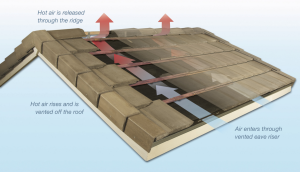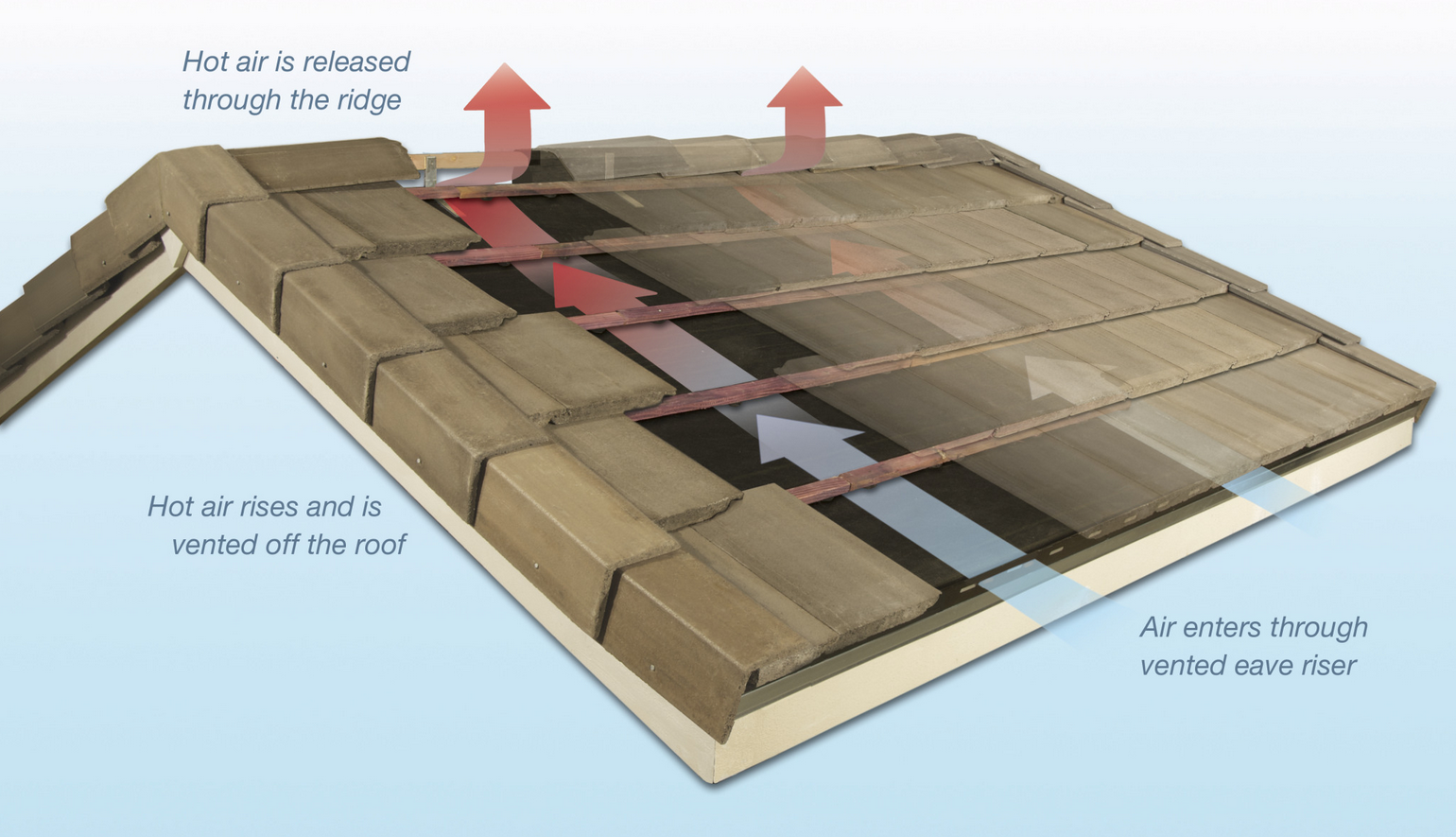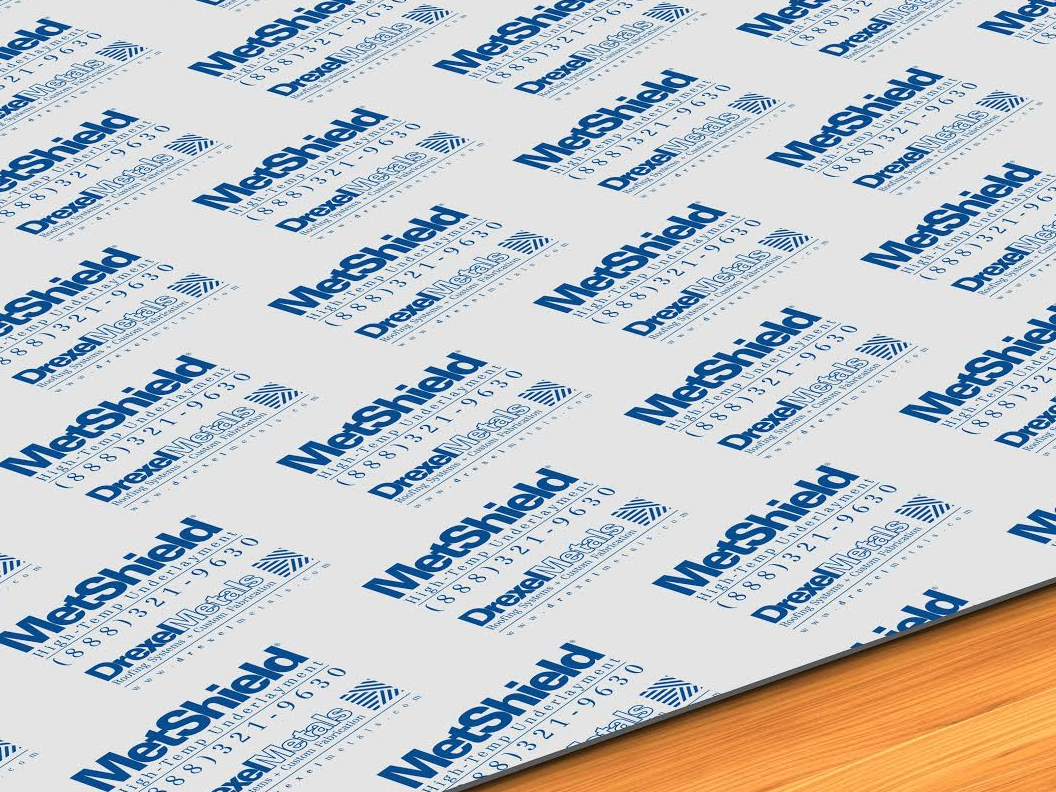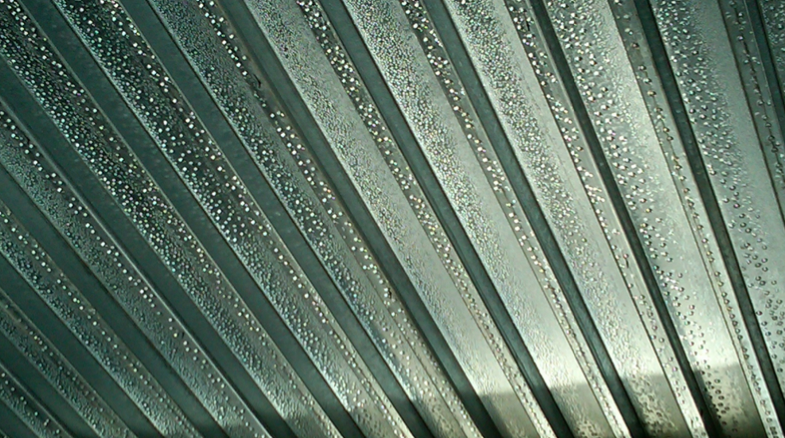We know proper ventilation of the attic space is an important part of construction. But what is “above-sheathing ventilation”?
Most roofing materials lay directly on the sheathing. Heat from solar radiation and interior heat loss from the conditioned space are easily transferred through the deck and roof system. This can increase energy costs and cause ice damming. The build-up of heat and extreme temperatures wings can also reduce the life of underlayment and other system components.
Tile roofs have an air space between installed roof tiles and the roof sheathing. This space reduces heat transfer and allows heat buildup to dissipate from the sheathing and roofing materials. This above-sheathing ventilation, or ASV, inherent to tile roof installations can be enhanced using counter battens, shims or manufactured systems to raise the horizontal battens above the roof deck. The system design will vary with the environmental challenge and goals. Specific examples are described below.

The Elevated Batten System by Boral Roofing uses treated 1 by 2s with high-grade plastic pads, a vented eave riser flashing and vented weather blocking at the ridge. With these components in place, heat transfer is minimized and heat buildup is dissipated, which reduces energy costs.
Energy Conservation in Hot Climates
In hot and dry climates, the natural ASV and thermal mass of the tile provide a layer of insulation when exterior daytime temperatures are greater than the conditioned space in the home. Vertical counter battens or shims that raise the horizontal battens increase this space and the corresponding benefit. The addition of vented eave riser flashing and ridge ventilation completes an energy-saving ASV system. The system shown below is the Elevated Batten System made by Boral Roofing, which uses treated 1 by 2s with high-grade plastic pads, a vented eave riser flashing and vented weather blocking at the ridge. With these components in place, heat transfer is minimized and heat buildup is dissipated, which reduces energy costs. The upgraded ASV reduces temperature extremes that shorten the life of the underlayment and other roofing components. These benefits are achieved with no mechanical or moving parts.
Cool and Humid Climates
The same installation can provide a different benefit in cool and humid regions. The Tile Roofing Institute and Western States Roofing Contractors Association’s Concrete and Clay Tile Installation Manual for Moderate Climate Regions says that in areas designated “Cool/Humid” zones, “Batten systems that provide drainage/air-flow (shims, counter battens or other approved systems) are required.” The area designated “Cool/Humid” in the current manual runs from approximately Eureka, Calif., to the Pacific Northwest, west of the Cascade Mountains. In this climate, moisture-laden air can migrate under the tile and condense in the space between the tile and roof deck. The underlayment is there to protect the sheathing but if the battens are raised above the deck, condensation will be reduced. Raised battens also allow moisture under the tile to escape to the eave. When roof tiles are fastened to a raised batten, underlayment penetrations are minimized.
Cold and Snowy Regions
Ice dams are one of the most damaging phenomena roofing contractors face. Snow movement on roof surfaces can cause damage to people and property. The goal in cold and snowy environments is to prevent ice dams by enhancing the ASV under the tile roof. Typically, a more substantial air space is created using larger vertical battens. A well-designed “cold roof” system that includes proper snow retention is the solution.
The TRI/WSRCA Concrete and Clay Tile Installation Manual for Moderate Climate Regions refers installers to the TRI/WSRCA Concrete and Clay Roof Tile Design Criteria Installation Manual for Cold and Snow. Regions “in locations where the January mean temperature is 25 deg. F or less or where ice damming often occurs”.
For more information and to download the Tile Roofing Institute’s installation manuals, visit the Tile Roofing Institute at TileRoofing.org.
ILLUSTRATION: Boral Roofing






Be the first to comment on "The Benefits of Above-sheathing Ventilation"